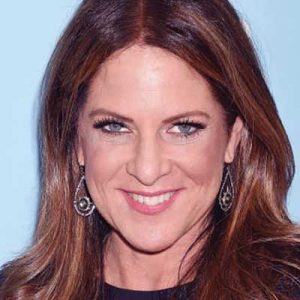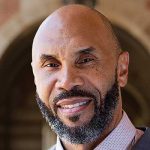
Cathy Schulman
Academy Award®-winning film producer, President and CEO of Welle Entertainment
When #MeToo and the TIME’S UP movements gathered steam as a response to the Harvey Weinstein allegations, they sent shockwaves around the globe and raised awareness about the intersection point between workplace discrimination and the prevalence of sexual harassment.
Female Filmmaker Initiative becomes ReFrame
ReFrame is a partnership between the Sundance Institute and Women In Film Los Angeles to increase the number of women of all backgrounds working in film, TV, and media.
The original summit that brought the industry at large together was called the Systemic Change Project – with over 65 Ambassadors signing on to the project.
Since rebranding as “ReFrame,” the initiative’s programs have been developed, the ReFrame Stamp for Features and Television has been launched, and a ReFrame Rise Directors Program launched last year.
ReFrame has developed a research-based action plan to further gender parity that includes several initial, iterative programs, as well as ongoing research with Dr. Stacy Smith and the Annenberg Inclusionists at USC.
ReFrame Partners have committed to participate in the following three programs:
From my perspective as President Emerita of Women In Film — a leading advocacy organization for women in media — the screen industries are now becoming conscious, woke and are slowly making progress towards demonstrable change. But there is confusion between the culture of sexual harassment post-Weinstein and the need for gender parity in the business. They are often treated as the same thing, but sexual harassment is a symptom of the wider issue of discrimination. At the top of the issue sits the fact that, across seven of the biggest media companies, just 17.9% of C-suite positions are held by women.
When we don’t have a diverse body of high-level decision-makers, men end up hiring more men and conversations continue to orient in the male direction. This highly masculine environment cultivates cronyism and leads to men thinking it’s easier to keep women out than to deal with them professionally. This ultimately leads to a culture where men are able to utilize their power in a sexual way.
There’s no question that #MeToo and TIME’S UP have helped to expose this culture, and that’s tremendously important work. But unfortunately, hashtag movements don’t touch the C-suite. They don’t even get close. The only way to change the industry is to transform it from the top down using practical, concrete actions.
This is why Women In Film decided to create an initiative to mobilize people who have access to high-level decision-makers. ReFrame is a group of more than 50 female and male influential leaders within the entertainment industry, including agency partners, senior network executives, directors, writers, actors, and guild leaders. Working together, we apply theories of systemic change thinking — which requires you to look at all parts of, and relationships within, the system you wish to alter — to effect cultural change.
In most systemic change projects you end up with a triangulation of problems, and ours was no different. The ReFrame model identified three core needs, the first of which is to expand the talent pipeline, which requires advancing and amplifying female content makers. We must also address the culture and habits of entertainment executives when employing women — financial decision-makers need to incentivize inclusive hiring and remove bias from corporate practice. Finally, there’s the business case for diversity. We need to prove that content by and for women is profitable.
The theory is that you can’t fix one part of the triangle without fixing the others, otherwise the whole model collapses. So in our first year, we presented three different tactical plans to actualize each systemic change goal.
To tackle the pipeline, we created the ReFrame Rise cross company operative sponsorship program for mid-career female directors, creating opportunities for them to access tangible support and maintain sustainable careers. My first job was actually on Kathryn Bigelow’s second movie, Blue Steel. Seeing her working in the director’s chair was an incredibly important experience for me. It made my own ambition of being a producer more realistic. However, the reality of the situation quickly set in, and it was another 17 years before I was able to work with a female director again. This isn’t unusual. Female directors can often go six or seven years between projects, and that’s a trend reflected in all areas.
To challenge hiring culture, we created an online resource called the ReFrame Toolkit, which provides practical ways to dismantle gender bias at every decision-making inflection point within the trajectory of making and financing content. For me, the key here is that gatekeeping executives, producers, directors, and department heads interview as many women as men and practice blind hiring, which means they review resumes before seeing the name of a candidate.
The trickiest part of the triangle is the business case. The biggest target group for studios for the last 25 years has been men and boys between the ages of 14 and 24. However, working with IMDb and experts in econometrics, we have created an algorithm that analyzes responses to stories created by and for women. Our results have shown that diverse content is better for business. And interestingly enough, the people who are deserting content viewing the most are those men and boys between 14 and 24. Unlike other demographic groups, we’re just not seeing that traditional target audience go to movie theaters together anymore.
Demographics in Hollywood
“DGA Publishes Feature Film Inclusion Report: Study Reveals Feature Film Director Diversity Remained Low in 2017.” Directors Guild of America, 21 June 2018.
Throughout my time as an executive, working across six different studios and producing more than 30 movies, I was always taught you have to pick content that pleases men and boys. I wanted to completely reverse that model and create content that served women and girls first. This was my primary motivation for setting up Welle Entertainment. The name is a combination of “we” and “elle,” and reflects our commitment to making great content with women, for women.
Women In Film
Women In Film (WIF) advocates for and advances the careers of women working in the screen industries, to achieve parity and transform culture. Their educational programming includes:
“About Women In Film Los Angeles.” Women In Film, Women In Film Los Angeles, 2017.
Running Welle has also given me an insight into just how difficult it can be to achieve gender parity in the entertainment industry, even when your company is set up to do just that! For instance, while working on the upcoming Netflix film Otherhood, we set out absolutely determined to hit a 50/50 balance in our crew in terms of male and female representation. We got close. We brought in every woman we could, but in the end we fell short. This experience made it painfully clear that, in many instances, the talent pipeline just isn’t there. For me, this only served to underline the importance of the work we’re doing at ReFrame.
Demographics of executive ranks at the seven major entertainment companies
Smith, Stacy L., et al. Inclusion in the Director’s Chair? Gender, Race & Age of Directors across 1,100 Films from 2007-2017. USC Annenberg, 2018.
http://assets.uscannenberg.org/docs/inclusion-in-the-directors-chair-2007-2017.pdf
Perhaps unsurprisingly, it’s streaming companies like Netflix and Amazon that are among the most eager to sign up to ReFrame. Both businesses have already created diverse content and reaped the rewards. The fact that two of the world’s most disruptive and forward- thinking companies are really backing diversity shows that’s where we need to head. If the big studios don’t catch up, if they continue to cater to a deserting audience, and if they fail to diversify at the C-suite level, they risk not being part of this industry’s future at all.
























































